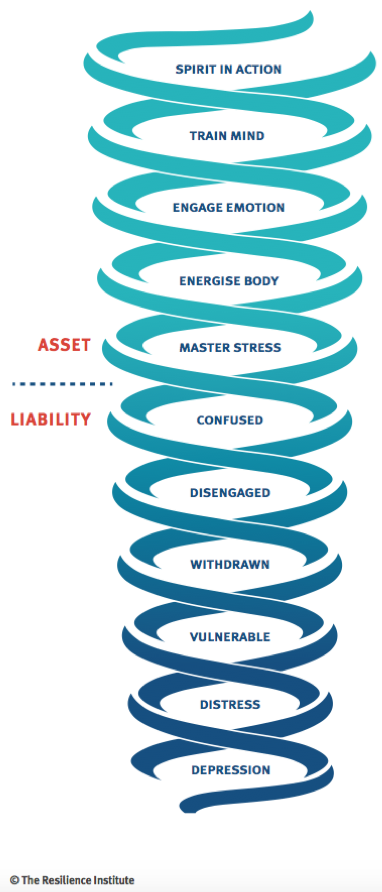Melbourne based company Springfox has just released The Resilience report, based on a survey of more than 26,000 participants across the world. It looks at the concept of resilience – the ability to bounce back from adversity – for individual participants, teams and organisations.

The Resilience Diagnostic
The survey is split into 11 categories, which make up The Resilience Diagnostic, with a set of 5 to 7 questions per categories. These categories are defined as either asset or liability. Highly resilient people have high asset scores and low liability scores.
The findings show that resilience varies according to age, gender and location. On average, resilience tends to increase with age, men have higher resilience scores than women, and resilience training has a greater impact in the Americas and Australia than Europe and South East Asia.
Why is resilience important?
At a macro level, absenteeism costs the economy $44 billion and the impact of presenteeism – when an employee turns up sick or is not engaged at work, is just as big if not greater.

So, integrating resilience into the culture is a way of building an organisation that moves forward. But according to Stuart Taylor, CEO of Springfox, the data shows that today’s workforce is not allowing companies or their employees to live up to their potential for innovation and success.
“However,” says Stuart, “What we learned is that resilience is a learned competency. Our research showed that when given resilience training, people could build their competency to adjust to change and develop recovery mechanisms.”
CEOs must lead by example
One of the report’s key findings was that in order to increase resilience in the workplace, CEOs must not only implement training but also lead by example. The report shows the power that leaders have to better create sustainable high performance organisations.
The statistics show that in organisations that don’t conduct resilience training:
- 55% of people worry excessively
- 50% are hypervigilant
- 45% experience distress symptoms
- 30% have impulse control problems
- 35% are unable to relax
- 30% experience excessive work intensity
This is a real cocktail for a fear-based culture. It’s hard to enact change and be innovative when these feelings are prevalent in the population and the leadership. CEOs must commit to, engage in and model resilience behaviours in order to create cultural change. Compassionate leadership, and a culture of respect with clear communication are key, as is incorporating resilience into the culture, as well as recruitment and training.
Resilience is a learned competency. Our research showed that when given resilience training, people could build their competency to adjust to change and develop recovery mechanisms. – Stuart Taylor
Stuart says that a culture of resilience creates a workplace where employees can express their talent, innovate and be healthy allows them to contribute at a sustainable level.
“The take home message is that it’s important for every organisation to make the shift. When the drive is around high performance and growth, there’s a word missing: sustainable.
The irony is that when an organisation is focused on high performance, it doesn’t get there. The people don’t make it. A sustainable approach is the key to high performance and growth – not striving, and failing, to achieve 100% but instead consistently achieving 80%.”







